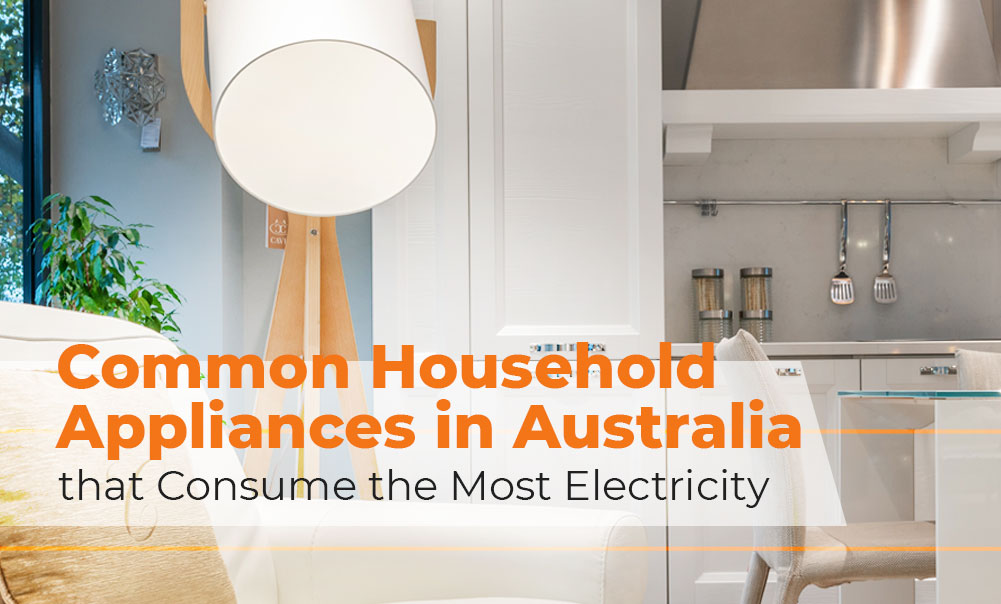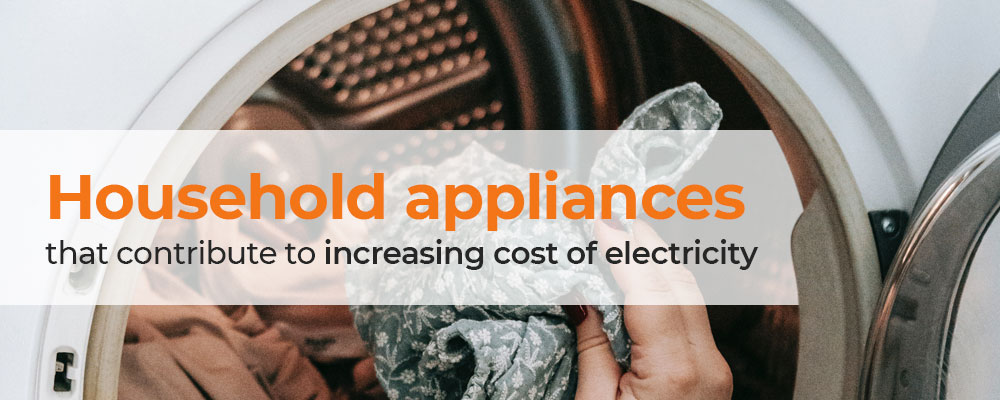Common Household Appliances in Australia that Consume the Most Electricity
How many times have you been surprised by the increase in energy cost? Especially when you have young kids. For some, receiving the electricity bill often comes as a shock. You really have no idea when the bill will be higher than your expectations.
There are lots of factors that affect the cost of your energy bill. Fortunately, when it comes to household appliances, you can identify those that increase your consumption. From your kitchen to your living room, here are some of the appliances that significantly contribute to increasing energy bills.
Household appliances that contribute to increasing cost of electricity
Oven
Ovens are among the most frequently used appliances in the kitchen. You can choose between electric and gas ovens based on what suits your needs best.
A common oven and cooktop combo approximately has a power figure of 8.7kW. If you will use it for a half hour to one hour a day, its running cost could be around $400 to $800 annually.
Fridge
This appliance typically runs 24 hours a day and that alone contributes to high energy use. The running cost of a 330kWh fridge with a 4-star energy rating is around $82.50 per year.
TIP:
Ovens and fridges are among the biggest energy drainers in your home. Improve energy efficiency in your kitchen by choosing appliances that are suited to your requirements. Don’t go for a really big fridge if that would leave unused space that will still generate extra electricity. It is also ideal to place your fridge in a cool space to improve savings.
As for ovens, reduce energy consumption by using lids when cooking or heating food. Ensure that the oven door is tightly closed as it also affects efficiency.
Air conditioners
This is another appliance that is known as a notorious energy drainer. A split-system inverter air conditioner is already a more energy-efficient option for this type of appliance. However, it can still consume a large amount of energy. For instance, a split-type air conditioner when used 3 hrs a day during the hottest months of the year can cost around $168.75 annually.
TIP:
To minimise energy consumption, use air conditioning systems as appropriate. One that has a small power figure is ideal for small bedrooms.
Home entertainment
There are different appliances that are classified under the “home entertainment” category. Collectively they can cause a huge increase in your energy bill.
See the list below to know their average watts usage and running costs:
• LED/LCD TV – 341 kWh/ year or around $85.25 yearly
• DVD player – 10-35 watts or $0.003-$0.01 per hour
• Desktop computer – 17-163 watts or $0.006-$0.06 per hour
• Laptop – 10-38 watts or $0.003-$0.01 per hour
• Game console – 15-200 watts or $0.005-$0.07 per hour
• Basic multi-function printer – 25-1200 watts or $0.008-$0.42 per hour
DID YOU KNOW:
Home entertainment appliances are usually left on standby mode 24 hours a day with significant usage during peak times.
Washing machines
There is a variation in energy usage depending on what type of washing machine you use. A 7.5kg front loader washing machine with a 4-4.5 energy efficiency rating may have a total energy consumption of 180kWh and may cost $45 annually.
TIP:
Choose the right size of washing machine for your needs. A fully loaded washing machine is also ideal as it will save you from the extra cost of loading another batch.
Clothes dryer
Another energy drainer is a clothes dryer which could have an annual running cost of $88.75. One way to avoid this expense is to dry clothes on a rack or line. You can also help reduce energy costs from using a clothes dryer by not overfilling your machine as this leads to a slower drying process and greater energy usage.
ALSO READ: The Role of Electricity Providers in Victoria on Energy Savings
It is important to identify the biggest energy drainers in your home. Keep in mind that some home appliances can consume a lot of energy so you have to be particular in checking their energy efficiency. Other factors such as choosing appliances that are suited to your needs and implementing energy-saving practices can also greatly impact your energy bills.
Choosing the right energy provider in Australia is another important factor that will help you make the most of the amount you spend on energy bills. Not all electricity providers in Australia are created equal so you have to compare to know which one can bring you the most benefits at a lower cost!
Need help in finding electricity providers? Check out Electricity Wizard. Take advantage of a free energy comparison tool that has already helped over a million Australians in the last 10 years.






 Compare Plans Online
Compare Plans Online Residential
Residential

 Business
Business

 Moving House?
Moving House? Helpful Energy Info
Helpful Energy Info 
